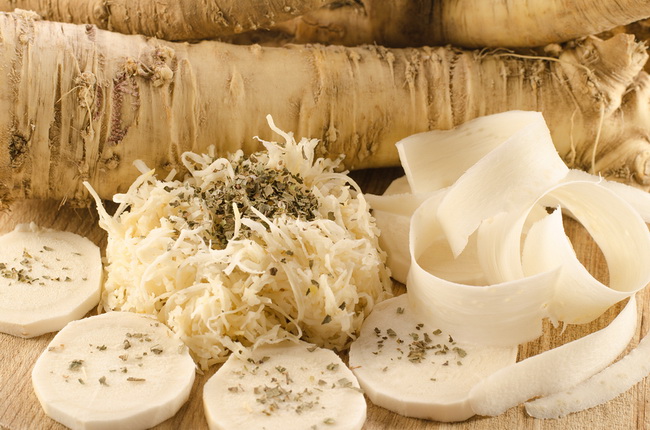- Make It Yourself Lavender Heart-Shaped Bath Bombs!
- 20 Things You Never Knew About “Down There”
- 12 Best Foods For Those Suffering From Arthritis Pain
- 12 Personal Hygiene Mistakes Almost Everyone Makes (Mom Never Told You About #4!)
- 15 Medicinal Plants And Herbs From The Cherokee People
- 12 Mind-Blowing Benefits Of Drinking Coconut Water During Pregnancy
- 12 Outstanding Winter Foods That Won’t Fatten You Up Like A Christmas Turkey
Horseradish: A Natural Antibiotic In Disguise

Photo credit: bigstock.com
You’ve probably seen it sitting on a restaurant table next to the ketchup and mustard. Horseradish is definitely an acquired taste, and most people either hate it or love it. But what many people may not be aware of is that horseradish might just be healthiest condiment in the world.
Horseradish is a plant related to wasabi, mustard, cabbage and broccoli. It has a very bold and spicy taste, too spicy to be eaten casually, and for this reason it’s more commonly used as a condiment like mustard rather than served as a side dish. The primary ingredient of the horseradish plant is its thick white roots, which, when sliced, release enzymes that break down a compound called sinigrin. This in turn triggers the release of mustard oil, which produces the pungent smell and taste that horseradish is known for.
While today, it’s commonly served as a garnish with steaks or hot dogs, ancient peoples used this sliced root as a folk remedy for all kinds of health problems. Modern scientific research has now proven that our ancestors were definitely onto something.
Here are the health benefits associated with eating horseradish:
1. Strengthening the immune system
Horseradish contains antioxidant compounds that enhance the strength of your body’s natural ability to defend against disease. These compounds trigger the body to produce more white blood cells, which are your immune system’s cellular foot soldiers that attack germs, viruses and foreign bodies. Horseradish is also a good source of vitamin C, which, as we all know, boosts the immune system even more.
2. Cancer-fighting properties
Many people would be amazed to learn that the humble condiment sitting in their fridge might reduce their chances of developing cancer. Remember that compound we mentioned earlier called sinigrin? Well, sinigrin belongs to special category of antioxidants called glucosinolates. Research has shown that this molecule has special cancer-fighting abilities. It acts as an inhibitor against the mutation of normal cells into cancerous ones.
Continue to Page 2





























